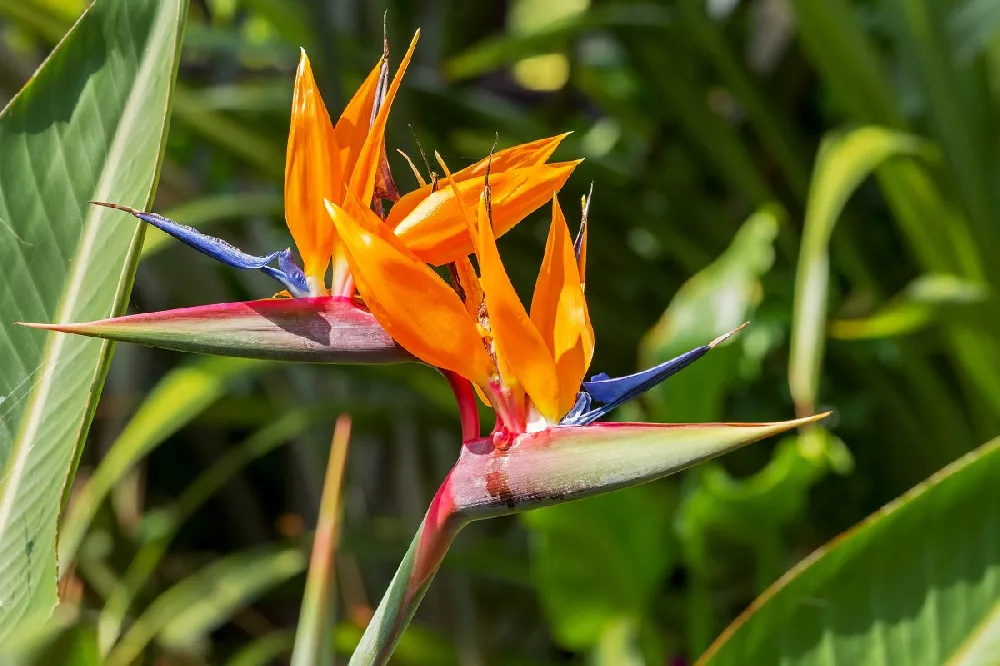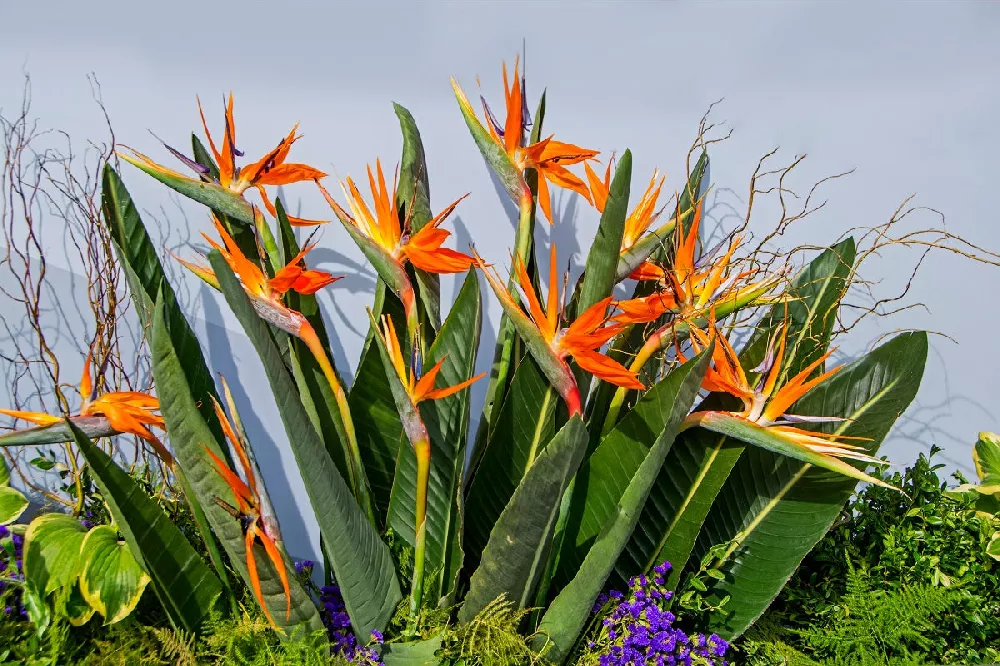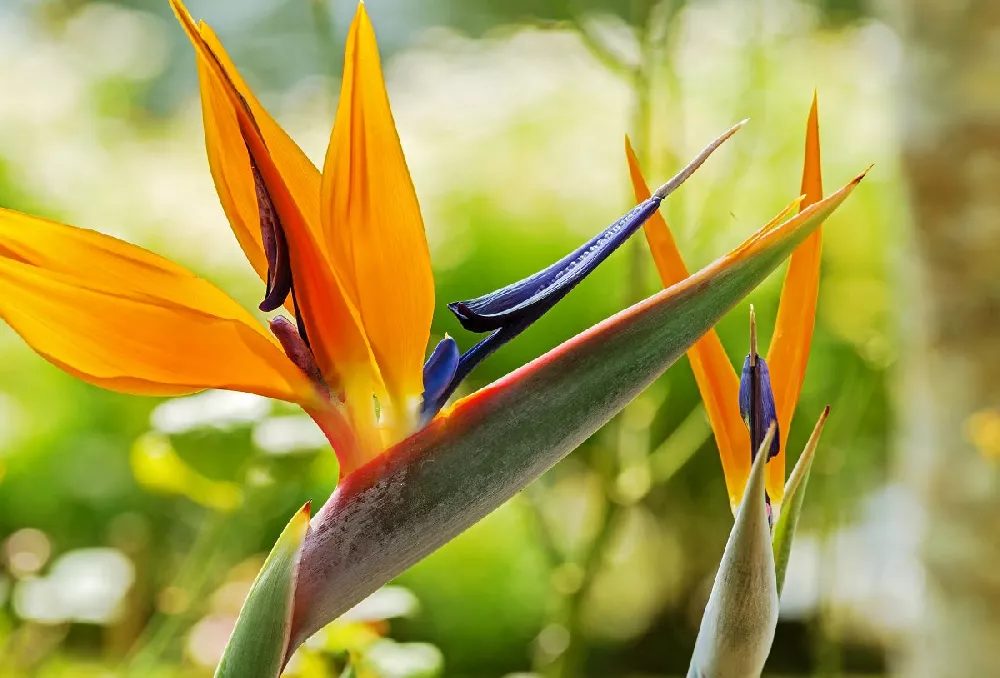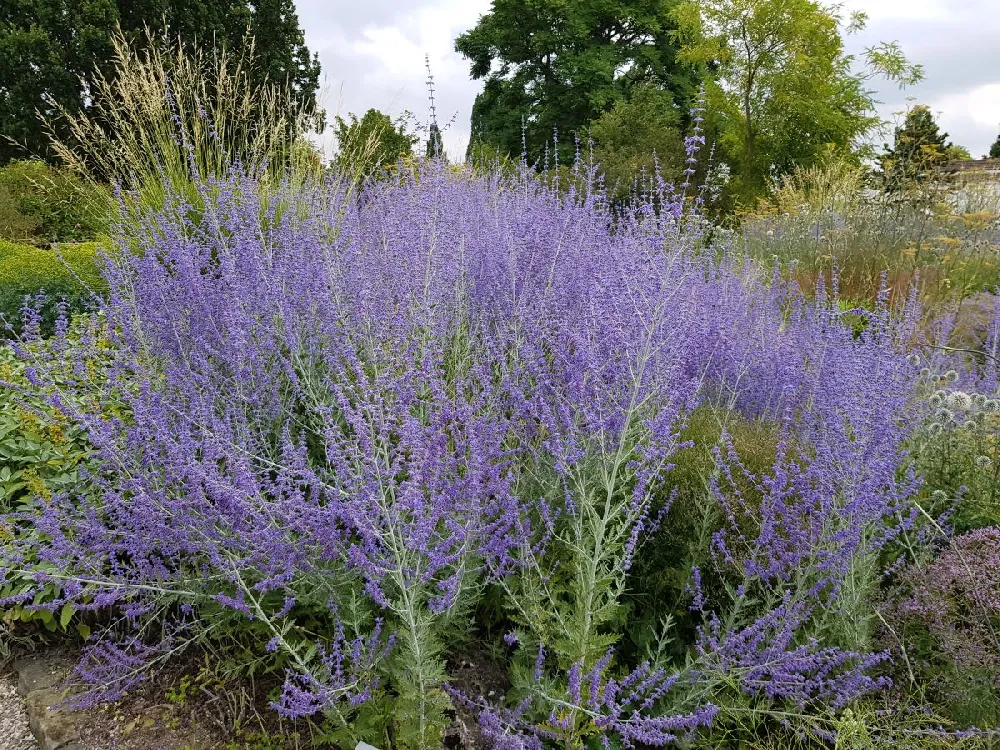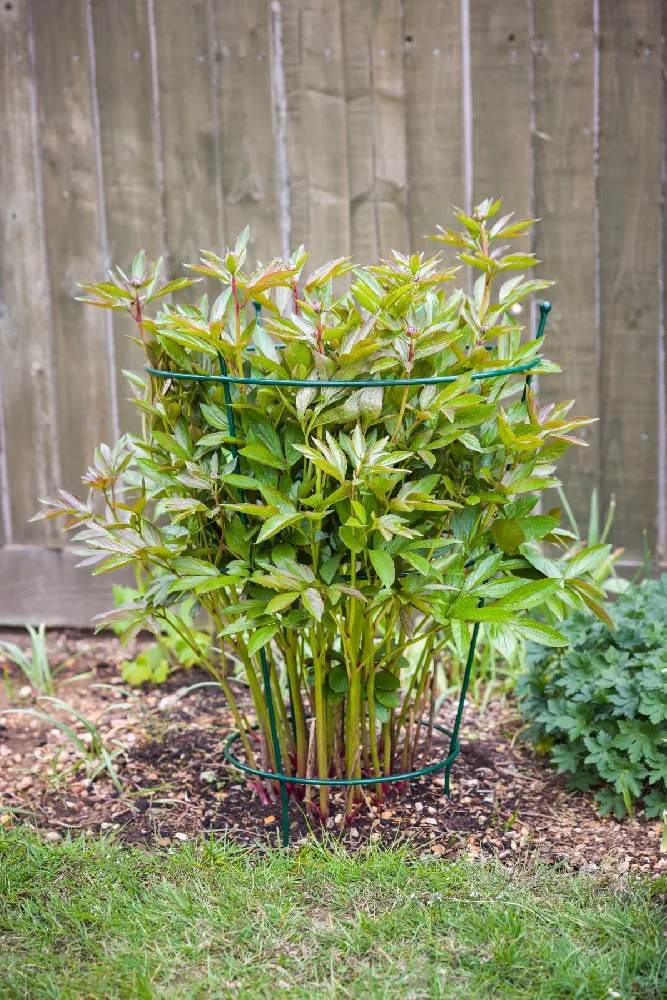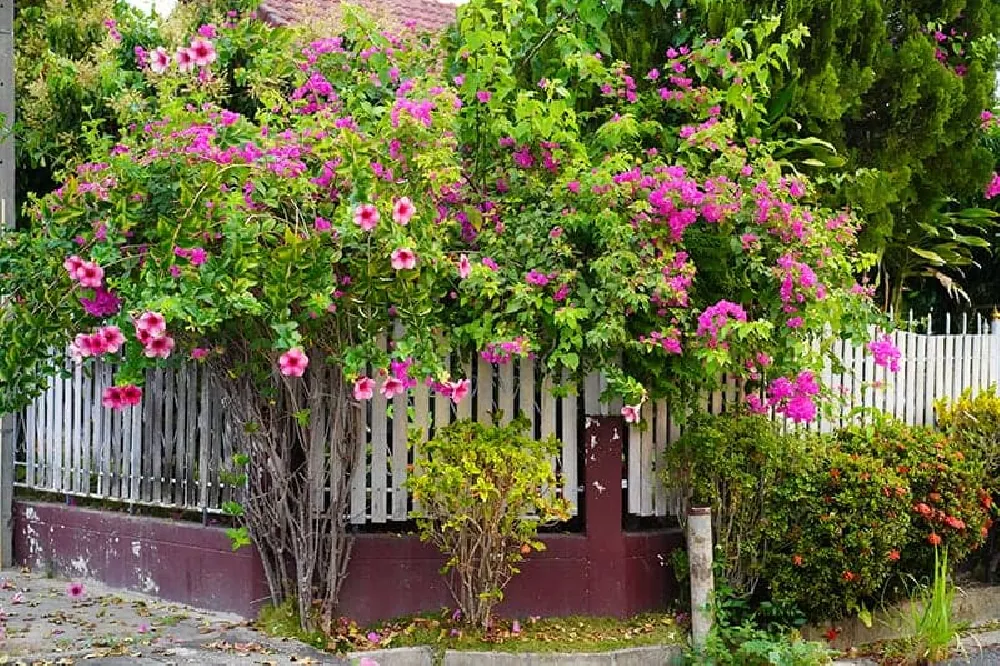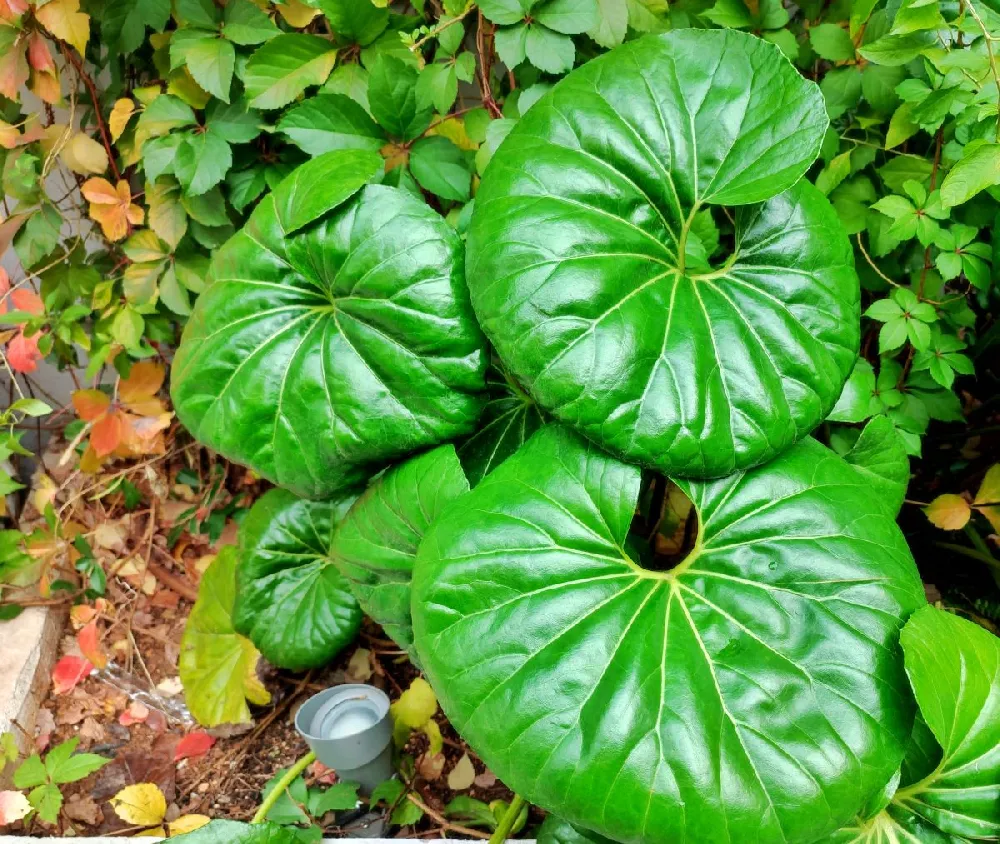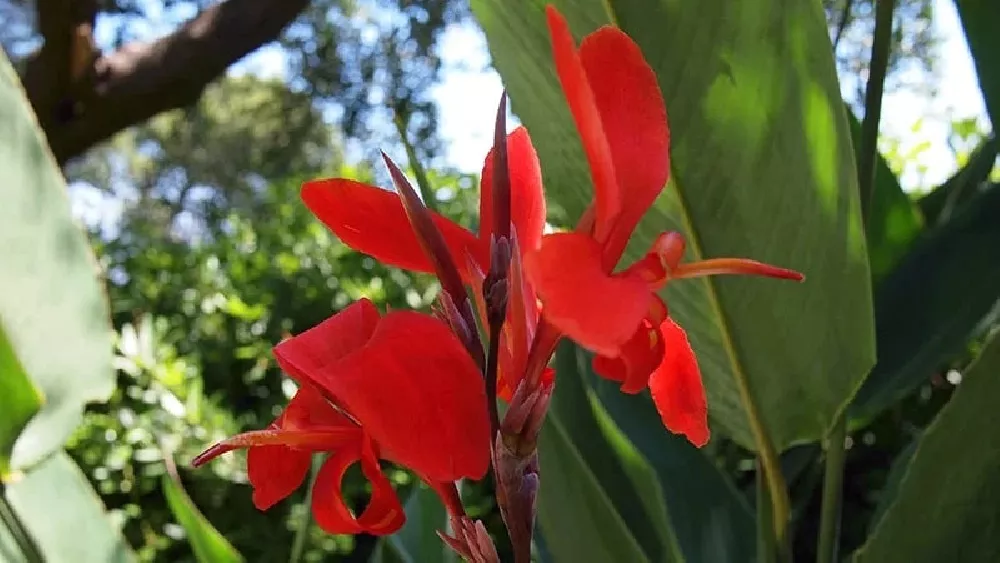Bird of Paradise for Sale - Buying & Growing Guide
- Ships in 1-2 days
- 1-Year Warranty Eligible
- Pots or accessories are not included unless specified in the product options.
Shipping Details:
Products shipped through FastGrowingTrees.com. Once your order is shipped, you’ll receive an email with a tracking number and estimated delivery date. Most orders will ship immediately.
Bird of paradise (latin name: Strelitzia reginae, family: Strelitziaceae) is a tropical attention grabber that blooms year-round in the south but is surprisingly easy to grow as an indoor houseplant. Its distinctive orange, blue, and white flowers are showy and reminiscent of a crane, giving the plant its other common name — crane flower. In environments similar to its native South Africa, the bird of paradise will thrive outdoors, but it can be just as happy indoors in the north, especially if its container is moved outside to bask in the summer warmth. Other notable characteristics include:
- It takes three to five years before it blooms but will generally flower from late winter to early spring.
- Mature plants can reach six feet tall and three to four feet wide, with leaves that range from 12 to 18 inches long.
- Spring and summer are the bird of paradise’s growing season, when it needs consistent moisture and regular fertilization.
Plant Care
Sunlight

Grows best in full sunlight. Six to eight hours of direct sunlight per day is ideal.
Watering
Water about once per week. Do not allow the soil to become waterlogged.
Fertilizing

Fertilize regularly with organic materials and balanced fertilizer.
Planting and Care
Planting instructions
Growing the bird of paradise as an indoor plant requires little effort and provides the reward of its bright, tropical flowers, and enormous, glossy green leaves. The trick is to create a semblance of its outdoor habitat, providing it with no less than six hours of bright light, including some direct sunlight. It will thrive in a room with east or west-facing windows, while southern exposure risks burning younger plant’s leaves. If your mature bird of paradise doesn’t bloom, it probably needs more light. If your rooms don’t get enough sunlight, artificial light will help.
Soil should be loam based, with organic matter such as compost mixed in, and it should have good drainage. The bird of paradise is a fast-growing plant that needs to be kept in a correctly sized pot. Start a three to four inch plant in a 10 inch pot. Move your plant to a 14 inch pot as it approaches its full height of five to six inches. Though it may be tempting to repot again, the bird of paradise does best when it is overcrowded, and keeping the plant pot-bound will encourage blooms.
When the weather is consistently warm, you can move your bird of paradise outside, doing so gradually to accustom the plant to the sun and taking care to return it indoors once cold weather returns.
Watering and nutrients
In nature, the bird of paradise gets plenty of warmth, humidity, and moisture. It thrives in temperatures above 65 degrees and as high as 85 degrees. During the spring and summer growing season, water the soil frequently enough to keep it damp but not waterlogged, providing the plant with enough water for it to run out of its drainage holes. Do this about once a week. If you live in an area with hard water, your plant will benefit from filtered water. Plants that are in brighter light will require more frequent watering. Provide the leaves with humidity via an indoor water feature or a water-filled gravel tray. Plants that need more water will develop yellow leaves far from their center, while brown, dry leaves signal overwatering. The winter brings a period of dormancy, when watering should be cut back to about once a month. The leaves will still require humidity, but spraying can be done less frequently.
In nature, the fast-growing bird of paradise is a heavy feeder with a steady diet of naturally decaying leaves. It will thrive with a balanced fertilizer (NPK 1-1-1) provided at one half of the label rate every two weeks during the growing season and every month or two during the winter.
Propagation
Bird of paradise can be propagated either by seed or by dividing its rhizomes and repotting. Though the seeds are beautiful and interesting, if your original plant is a hybrid then the seeds will not replicate its parent. Additionally, growing from seed can take as long as 10 years.
To propagate from seeds, once the bird of paradise flower has died back, the pods can be cut open to reveal black seeds the size of peas, with remarkable orange tufts. These need to be planted as soon as possible, as the seed coat will eventually harden. If this happens they can be soaked in lukewarm water for a day or two. Following a soaking, scarify the seed coat with a file or knife, remove the orange tufts and plant the seeds a half inch to one inch deep in a moist seed-starting medium. Provide humidity by placing a plastic bag over the top of the seed pot and keep the environment between 75 and 90 degrees to promote germination. After one to three months you should start seeing seedlings that can be transplanted into six inch pots once they have a few leaves.
To propagate by division, remove your plant from its pot and cut through the root ball cleanly using a sharp knife, making sure that each section includes at least one stem. Repot into an eight to 10 inch container, keeping the soil moist for at least three months to allow the roots to get well established. In one to three years, the plant should start yielding blooms.
Pruning
Indoors, a bird of paradise will require very little pruning. Dead flowers can be trimmed off by using very sharp shears to cut the flower stalk off as close to the base of the plant as possible. Leaves should be left alone as long as they are not damaged or dying. If a plant is growing too large, you can cut the stems to just above the ground, but a good rule of thumb is to avoid removing more than one third of the plant per season. You can thin your plant to allow more air and light by removing only a few carefully selected stems and leaves. You can also remove new growth at the base of the plant.
Pests, diseases, and animals
Bird of paradise plants are vulnerable to mites, aphids, and scale insects. You can control all of these pests with insecticidal soap, taking care to apply it to the undersides of the leaves. You can also protect against pests by using systemic pesticides you apply through the soil and disperse via the roots to the rest of the plant.
Overwatering can lead to gray mold, also known as Botrytis cenerea. Signs of this condition include dark spots followed by a layer of mold. You can remove the affected parts from your plant.
Light
When grown outside, the bird of paradise thrives in full sun and can also tolerate partial shade. To encourage the plant to flower, you should allow as much light exposure as possible. When kept as a houseplant, the bird of paradise should be in bright indirect light.
Though it requires plenty of sun, the plant is prone to scorching if it is kept in a south-facing window. Instead, position the plant in a bright window that is protected by a sheer blind, or keep it in a west or eastern-facing window. A north-facing window will not provide enough light to allow the plant to thrive. You could alternatively keep the plant in a bright room
Temperature
The bird of paradise plant needs to be grown in temperatures between 65° F and 85° F, which means outside it is suitable for growing in USDA hardiness zones 10, 11, and 12, or it can be kept inside as a houseplant. As a general rule, tropical plants like the same temperatures as humans, so if you are comfortable with the temperature in your home, then so is your plant. You should take care not to leave this plant in a room that does not get heated during cold winters, such as a spare bedroom, as it will not survive in temperatures any lower than 60° F.
This plant doesn’t respond well to sudden temperature fluctuations so try to keep its temperature fairly consistent all year round when kept as a houseplant. If your plant does endure a drop in temperature, it will be slow to recover, or may not recover at all, so pay close attention to this aspect of care. Many people grow these plants in containers, so they are able to keep them outside in the summer, then move them indoors when temperatures start to drop in fall. This is a perfectly good way to keep your bird of paradise, just be careful not to forget about it and leave it outside during cold snaps.
When moving your bird of paradise back outside in the spring, you should do this gradually to allow the plant to acclimatize. The best way to do this is to move the plant outside in a partially shaded position for a few hours a day over the course of a week, gradually increasing the amount of time it spends outside, and then repeat the same program when moving it from partial shade to full sun. This will prevent any damage to the plant that can occur as a result of sudden temperature changes.
Humidity
As a tropical plant, the bird of paradise thrives in high humidity. When kept as a houseplant, you will need to find a way to increase the moisture levels of the air around the plant, as air in homes is typically dry, especially in winter. One way to do this is to mist the foliage of the plant daily with a fine water spray. You can also use an electric humidifier that releases tiny droplets of moisture into the air.
Another option is using a pebble tray. To do this, line a tray with pebbles and add water so that the pebbles are not completely submerged. Set the plant’s container on top of the tray, ensuring that the water does not come into contact with the plant pot. As the water evaporates from the pebbles, it will increase the humidity around the plant. You will need to keep the water levels topped up to ensure this method remains effective.
Repotting
Bird of paradise plants grow vigorously and will need to be repotted every year so that they have enough space to accommodate root growth. The best time to repot the plant is in the spring of each year, as this will allow the plant to spread into its new space as it enters its phase of rapid growth. To repot the plant, gently lift it out of its current pot, and place it into a new pot that is one size up from the previous pot, and filled around the base with fresh potting soil. Fill around the edges with further potting soil, and ensure the base of the plant sits at the same level within the pot as it did in the last pot. Gently press the plant in place to ensure it is secure.
Birds of paradise plants can become very big, so they will need a good-sized pot to make sure they are bottom-heavy and don’t topple over, and also so that their roots have enough space to spread out. A four-foot-tall bird of paradise should be in a pot that measures ten inches across, while a six-foot plant will be comfortable in a pot that is 14 inches across. Once the plant reaches maturity, you will no longer need to repot it, and it can remain in its final pot for the foreseeable future.
Birds of paradise do not bloom until they reach a certain size, but once at this size, their roots should be pot bound in order to bloom successfully. Allowing the plants roots too much space can interfere with the blooming cycle and can prevent the plant from blooming altogether or cause reduced flowering. A bird of paradise that is mature, but rootbound, will produce the most abundant blooms.
If the soil of your mature plant needs to be refreshed to replenish nutrients, you can repot your bird of paradise in spring, but put it back into the same pot or a pot the same size. This will allow you to freshen up the soil without disturbing the blooming cycle. Alternatively, just top-dress the plant’s soil with organic compost for a nutrient boost and to improve soil quality without disturbing the plant’s roots.
Flowers
The flowers of these plants are very distinctive and easily recognizable. They look like tropical birds taking flight, hence the common name of the plant. This plant will not flower until it is three, four, or five years old, depending on its growing conditions, but when it eventually does flower, you’ll find that it was worth the wait. The flowers of this plant are predominantly bright orange, with flashes of blue, red, and white. Each flower lasts just one week, but the plant blooms in succession so that you can enjoy a fairly long blooming period.
Toxicity
This plant is toxic to pets, including dogs, cats, and horses. It is also poisonous to humans, though a significant amount would need to be ingested for it to cause severe symptoms. The leaves of the plant contain hydrocyanic acid, while the seeds contain tannins. Symptoms of ingesting this plant will include digestive discomfort, vomiting, unusual breathing, and discharge from the eyes. If you have curious pets or children, it would be best to keep this plant out of reach or avoid owning it altogether.
Bird of Paradise Plant Varieties
Giant Bird of Paradise-Strelitzia nicolai
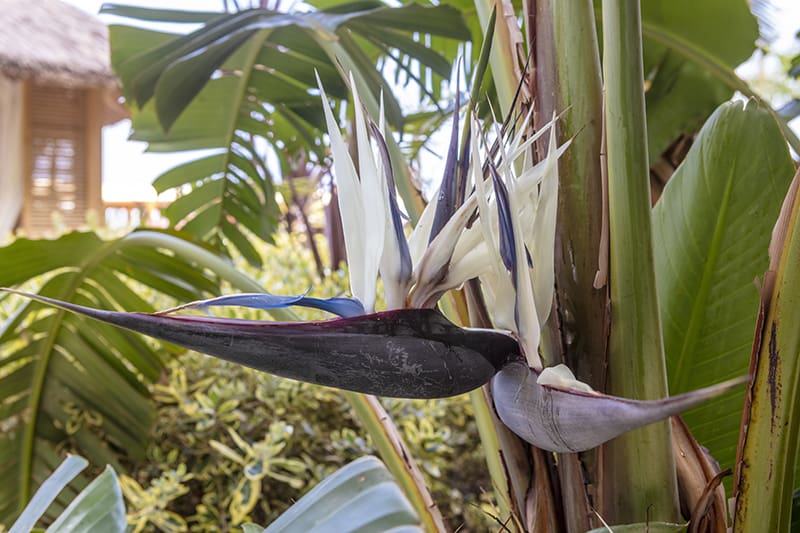
As the common name implies, this is a huge version of the bird of paradise plant, reaching heights of up to 20 feet. A single leaf can exceed five feet in length. These plants produce bird-like flowers that are entirely white.
Common Bird of Paradise-Strelitzia reginae
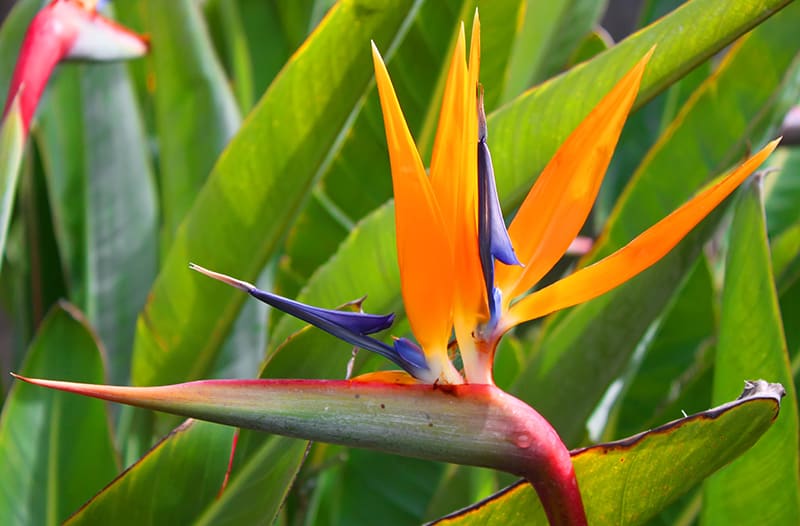
This is the most common bird of paradise plant, producing flowers that are typically orange.
Bird of Paradise Shrub-Caesalpinia gilliesii
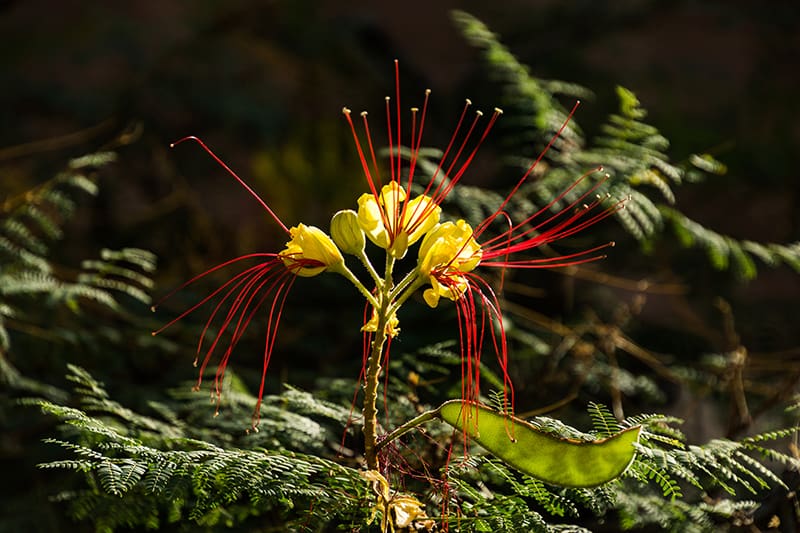
This award-winning shrub is commonly known as a bird of paradise, but it does not belong to the bird of paradise (Strelitzia) family, and instead is a member of the pea (Fabaceae) family. It is native to Argentina and Uruguay and produces exotic looking brightly colored flowers.
Red Bird of Paradise-Caesalpinia pulcherrima
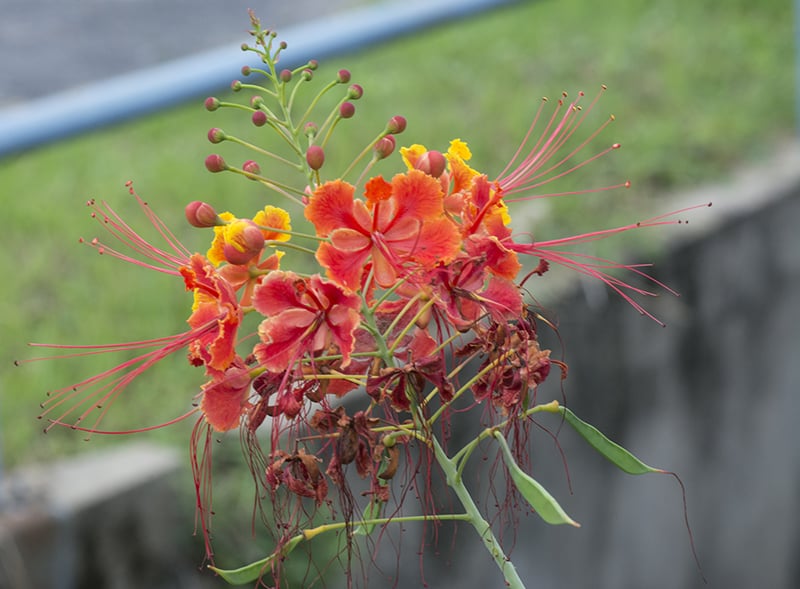
This is another member of the pea family, which is also commonly known as the Mexican bird of paradise. It takes the shape of a shrub that can reach up to nine feet tall. This plant produces tropical-looking flowers that are the national flower of Barbados.
FAQs
Are birds of paradise poisonous?
Birds of paradise are toxic to pets, with symptoms of toxicity appearing in less than 20 minutes. It is considered nontoxic to humans, though a child that eats any of the plant will likely experience nausea.
How can I tell if I am providing my bird of paradise with the proper care?
A bird of paradise’s leaves convey its health. Curling leaves are an indication that your plant needs more water, while several yellow leaves may mean that nutrient levels are low. If yellow leaves appear far from the plant’s center then the plant needs more water, while brown, crackly leaves are a sign of overwatering. Slits and breaks in the leaves are normal, and not a cause for concern.
